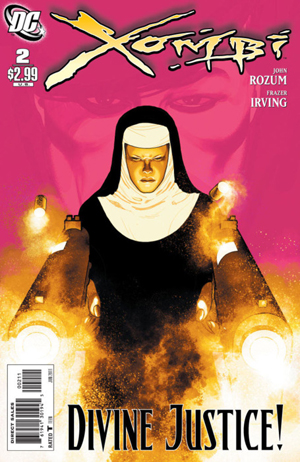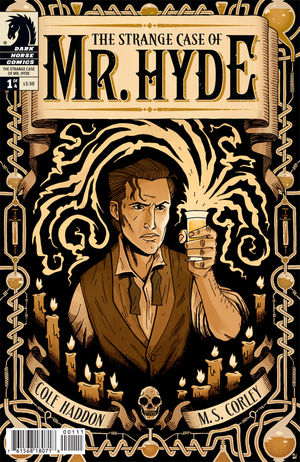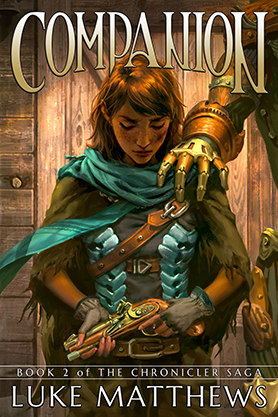Story by Cullen Bunn
Art by ChrisCross and Marc Deering
The final issue of Cullen Bunn’s Sorcerer Kings arc brings us to the ultimate confrontation between the wizards who destroyed the world and the remnants of an embattled Justice League. Having been part of the original conflict, an aged Batman puts a plan in motion to stop the Sorcerer Kings from implementing their insurance policy: sending a lesser god back in time to win their initial battle with Batman and his cohorts.
This story has, at times, felt rather derivative of a number of other time-travel/alternate future stories, pulling elements Terminator, Timecop, Freejack, etc. The implementation of those elements, combined with unique looks at an alternate future-DCU and some interesting characterizations, have kept the story flowing well, and this issue is no different. We see the (inconsequential) demise of some beloved characters, and Bunn’s take on a magic-fueled, enchanted-sword-wielding Supes is a fun departure for the character.
Chriscross & Marc Deering’s art is very fitting for the book; a colorful and dynamic presentation. Chriscross’s facial expressions are priceless and well-matched to Bunn’s storytelling, even in moments that wouldn’t normally matter or from characters that the reader may not be paying attention to. The depictions of spells and magical abilities are interesting and varied, and lend a nice feel to this magic-dominated setting.
My earlier word really sums up the issue: fun. Unfortunately, “fun” also translates to “shallow”. In spite of some gritty deaths and powerful enemies, the deaths don’t carry any emotional weight and the action never delivers any real tension. In the end, everything wraps up a little too neatly, in a fairly forgettable way. As much as I love Cullen Bunn’s work on The Sixth Gun, this arc and this issue felt disposable, and not nearly as nuanced as some of his other work.
In the end, though, it was fun. And maybe that’s enough.






